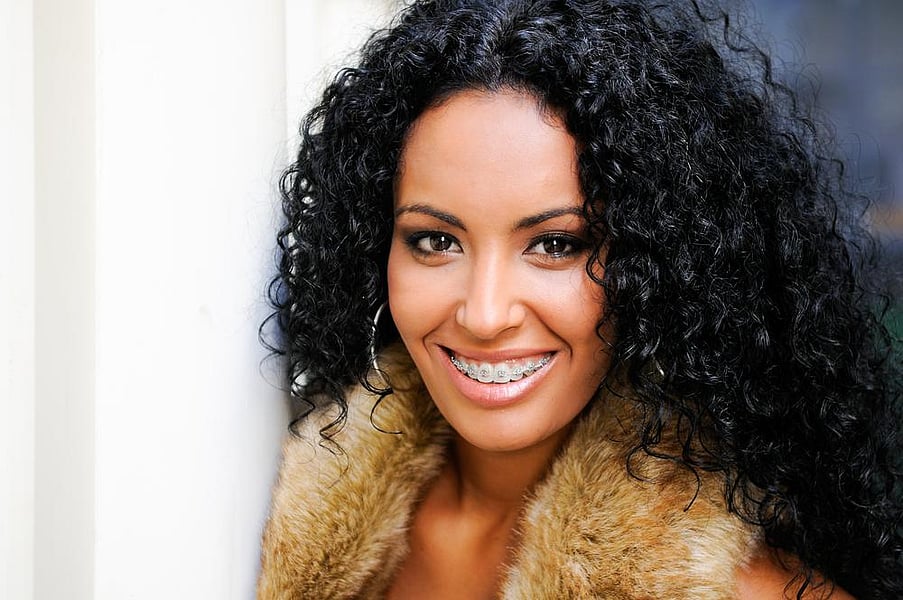Braces for Adults

Am I too old for braces?
Although teeth can be moved more easily while the jaw is still growing, it's never too late for braces. In fact, about 20 percent of orthodontic patients these days are adults, many of them on their second set of tinsel teeth. Braces now come in a range of colors, including gold. For just a few hundred dollars more, you may be able to get clear or tooth-colored ones made of ceramic or plastic. An orthodontist may even be able to attach the braces to the insides of your teeth if you prefer, although this process is much more costly and uncomfortable.
How do braces work?
An orthodontist glues tiny brackets to the front of the teeth and connects them with a wire bent to the shape he wants the row of teeth to assume. Then he adjusts the wire every four to six weeks, as the teeth are slowly pulled into position. He may also ask you to wear rubber bands (to add pinpoint pressure) or headgear, a metal brace that fits into slots in the brackets and wraps around the head, pulling the front teeth back. Once the braces come off, you'll probably need to wear a retainer, a removable custom-made brace, to keep the teeth in their new places. For the first month, you'll need to wear it all the time, but after that only at night for a while, and eventually you should be able to taper off to one or two nights a week.
Do braces hurt?
Not as much as they did when you were a kid. Gluing the brackets to the front of the teeth eliminates the need to force metal bands around each tooth, as was necessary with the braces of decades past. And the wires are more flexible now, particularly those made of alloys, such as nickel titanium, so they apply pressure more gently. That's not to say the process is painless. You may feel sore for a day or two after your braces are tightened, but a dose of aspirin or ibuprofen can usually ease the discomfort. If your gums or cheeks become raw or irritated from rubbing against the brackets, your orthodontist can supply you with wax to smooth things over until the tissue heals.
How long will I have to wear them?
These are the two most common questions orthodontists hear from prospective patients. Most people wear braces for one to three years. At an initial consultation, the orthodontist will perform a thorough exam of your teeth and jaw, taking x-rays and impressions. Based on that, he will give you his opinion on the best course of treatment and an estimate of the cost. In the end, how long the treatment lasts may depend on how willing you are to wear devices such as headgear that can speed up the process.
How do I find a good orthodontist?
Ask your dentist or your friends and family to recommend someone or call your local dental society. Look for a specialist who has worked with adults, and factor in convenience, too. If you work outside your home, consider orthodontists near your office, or choose one near home who offers early-morning, evening, or Saturday appointments.
Further Resources
American Dental Association
211 E. Chicago Ave.
Chicago, IL 60611
References
Braces. American Dental Assocation. https://www.mouthhealthy.org/en/az-topics/b/braces
Adult Orthodontics. American Association of Orthodontics. https://www3.aaoinfo.org/_/adult-orthodontics/
Related Posts
Change Seen in Pediatric Respiratory Infection Trends After SARS-CoV-2 Emergence
THURSDAY, Oct. 6, 2022 (HealthDay News) -- Seasonal trends in acute respiratory...
Why Are Cases of Pancreatic Cancer Rising in Young Women?
MONDAY, Oct. 25, 2021 (HealthDay News) -- In his work with patients who have...
Las tasas de diabetes siguen en aumento entre los estadounidenses jóvenes
JUEVES, 9 de marzo de 2023 (HealthDay News) -- Una preocupante nueva...
